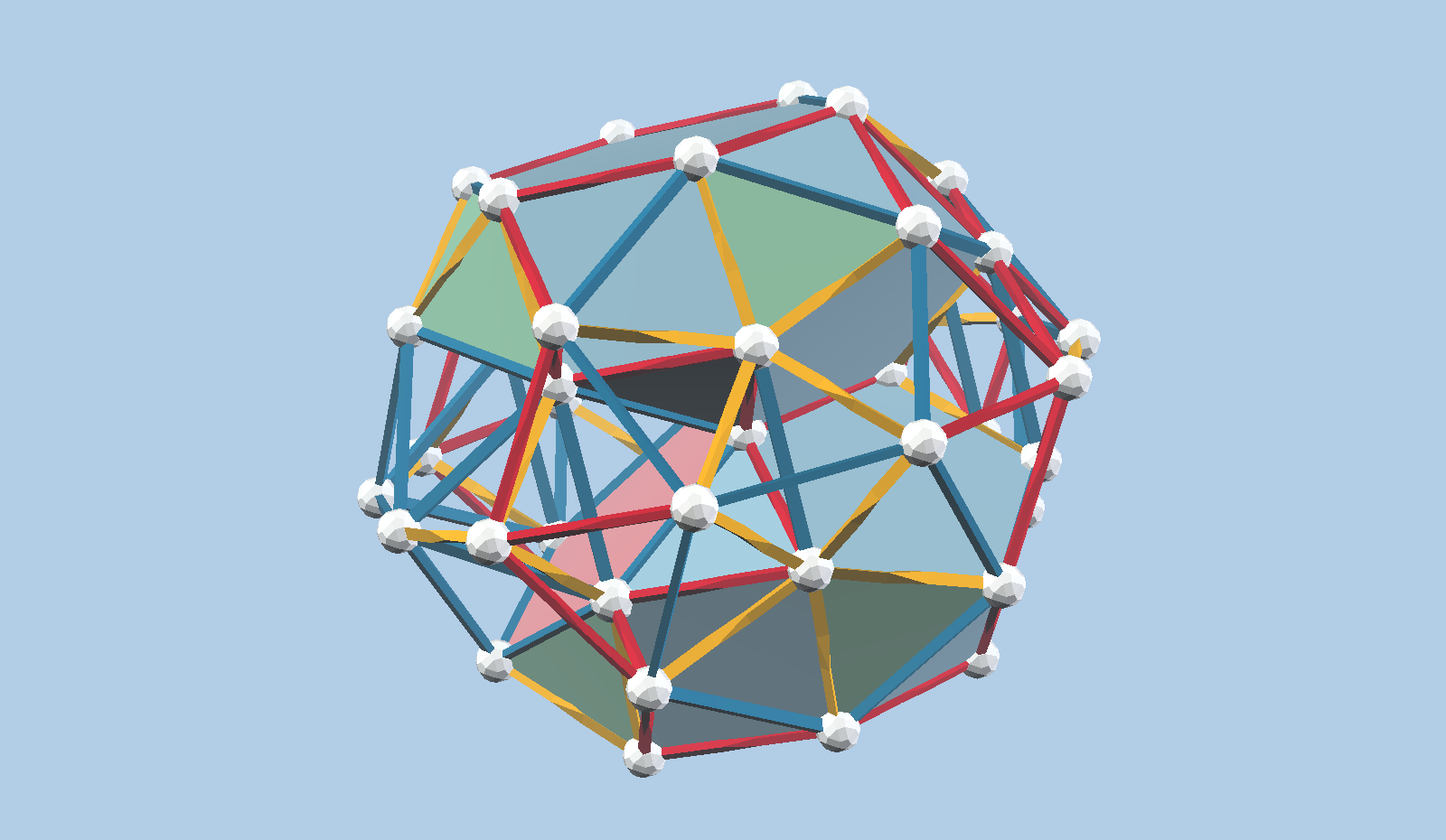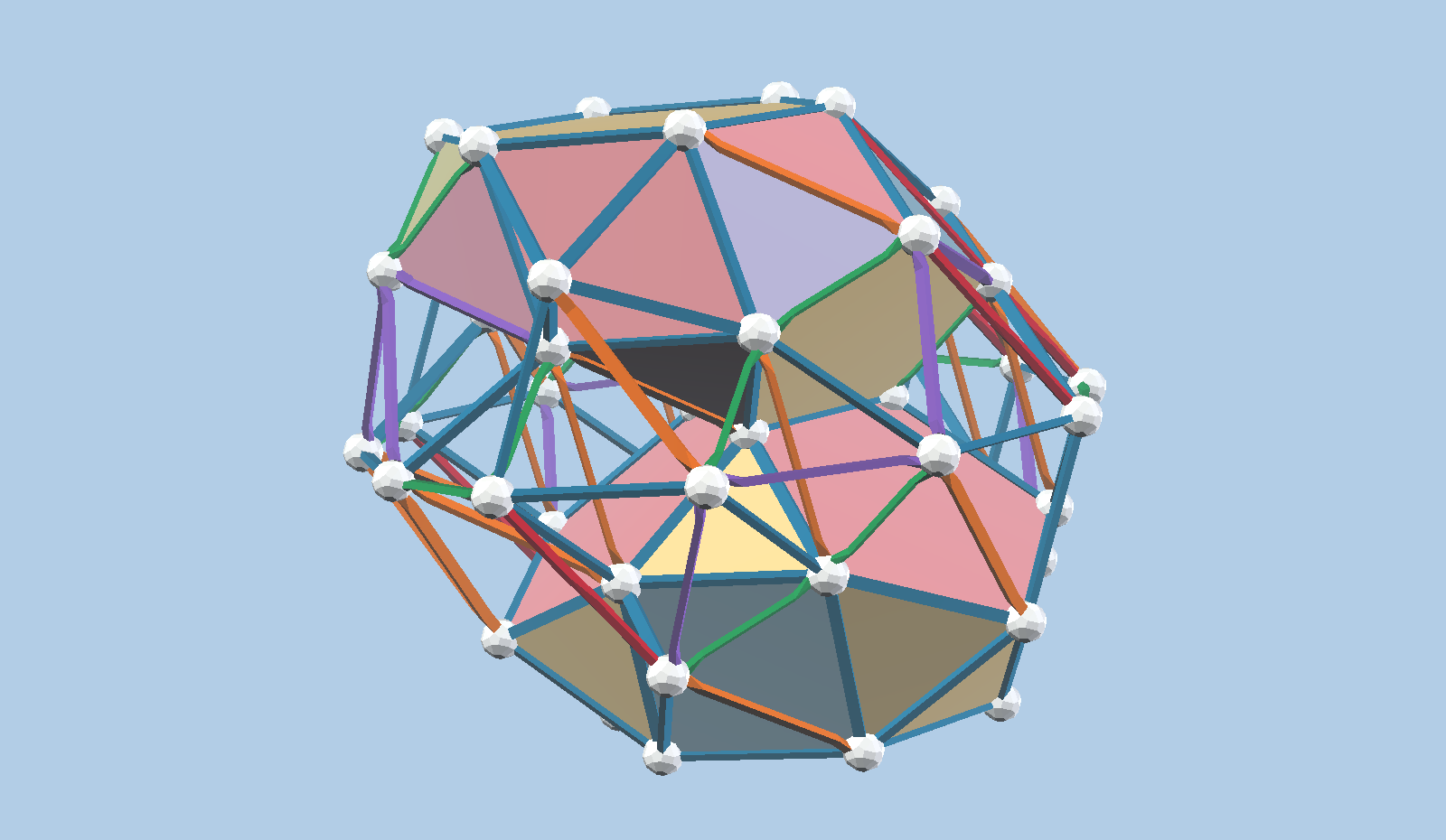The object below represents a four-dimensional CRF polytope, the triangular hebesphenorotundaeic rhombochoron, or J92 rhombochoron for short.

Somewhat unusually, this CRF polytope can be realized (as a 3D projection) in Zome struts. This is because its 4D coordinates can all be stated using expressions involving only integers and the golden ratio .
In general, a CRF polytope is a 4D generalization of a Johnson solid. There are 92 different Johnson solids, having variously esoteric names, but fortunately also numbered. The polytope shown here has some J92 cells and some J62 cells. In the first rendering, one of the J62 cells is made entirely with blue struts, since that cell lies entirely in the 3D hyperplane of projection. All other cells are somewhat foreshortened in the 3D projection, because they do not lie in that hyperplane.
In order to show the internal structure more clearly, only the "near" half of the object is rendered; the other half would fit inside the same volume, as a rotated or reflected copy.
We can stretch the object slightly along a red strut axis perpendicular to one of the internal blue pentagons, until a J92 cell is rendered in blue struts, rather than the J62 cell. Stretching like this is equivalent to rotating our 3D projection hyperplane relative to the line of projection, so they are no longer orthogonal. For a 3D-to-2D analogy, imagine taking a Zome model out in the sun, and casting a shadow on the ground when the sun is not directly overhead; the shadow will be a little elongated in the same way, since the sun’s rays are not orthogonal to the ground plane.

The Eusebeia page gives vertex coordinates for the J92 rhombochoron in terms of and . My colleague, David Hall, and I realized that the factors involving could probably be eliminated with a judicious 4D rotation. We wrote a little code to discover the 4D rotation matrix, and to generate a data file appropriate for import into vZome. In the data file, the vertex coordinates are stated like this: ``` (-1,0) (1,0) (-1,-2) (-1,0) ``` These are the w, x, y, and z coordinates, and each pair can be interpreted as meaning , for integers and . Note that the data file has redundant information for the edges of the polytope, stating 397 edges, when there are only 246 unique edges. I extracted the edge data rather naively from the 262 polygon faces. David used the Stella4D-generated OFF data here to engineer the vertices and faces in our initial data set that included terms.